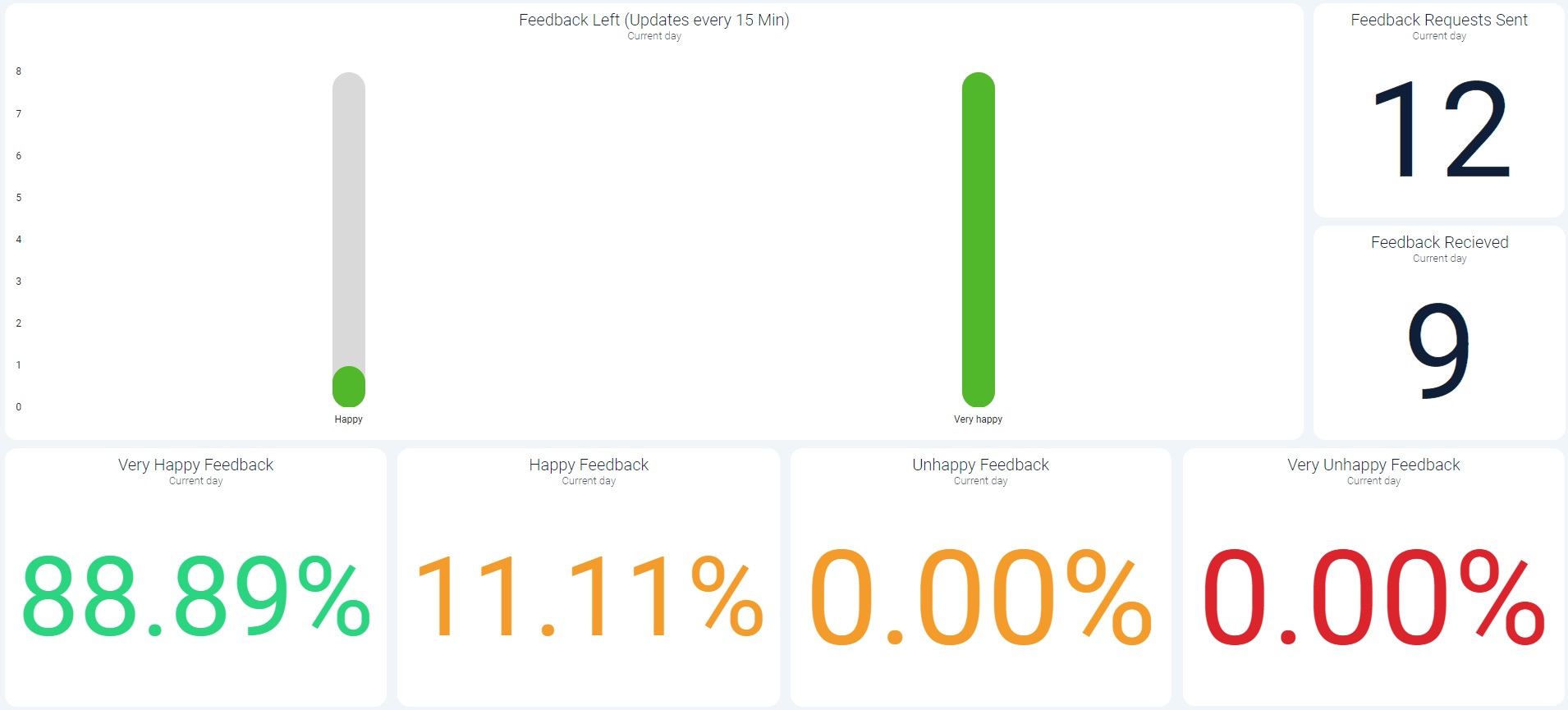
Have you ever received an email from a business asking for feedback? We bet you have. Did you give feedback? Did you ignore the email? Did you give 5 stars just so that you can say you gave feedback?
You aren’t alone. The average response rate to email-requested feedback rates sits at 26% for most businesses. At Microbyte, we are happy to report that we receive a 36%* response rate from customers. But we want more.
Recently, we’ve been thinking about why feedback is so valuable and why we love it so much. Here are our thoughts on why all businesses need feedback and why your opinion is so crucial.
The Business Benefits of Feedback
If your IT business does not have an established process for gathering and acting on feedback, you are missing out on the potential information you need to improve your services, grow your business and connect with customers.
Feedback is a valuable resource which can be used to inform business decisions and plan for a better future. Below are just a few of the ways we have benefitted from receiving feedback and taking our customer’s opinions seriously.
Reputation Management
As a business, your reputation within your industry and with customers is vital. Establishing a positive reputation and gaining trust promotes your business more effectively than any marketing tool.
When it comes to business reputation management, customer feedback is immensely important. When a business demonstrates that it takes the time to listen to its customers and acknowledges their opinions, it fosters a strong sense of trust and demonstrates a commitment to improvement.
Positive feedback serves as a powerful testament to the company’s dedication to excellence and can be used in marketing materials, while constructive feedback highlights areas that require attention and allows a company to address issues fast. Through this invaluable feedback loop, businesses continually refine products and services, fostering a positive reputation as a responsive, active company.
Customer Retention
Just as feedback can help attract new customers by boosting a business’s reputation, so it can also actively help retain existing customers.
When a company values and actively seeks customer input, it demonstrates a genuine commitment to their satisfaction and needs. By carefully listening to their feedback, businesses can identify areas of improvement and promptly address any concerns to benefit clients and customers.
This responsiveness creates a strong bond of trust and loyalty with customers, making them feel valued and heard. Moreover, positive feedback highlights the aspects of the business that customers appreciate, reinforcing their decision to stay loyal.
With frequent feedback, businesses can continually adapt and evolve to meet their customers’ expectations, cultivating lasting relationships and ensuring increased customer retention.
Competitive Advantage
Feedback isn’t only crucial in attracting and retaining customers. It is also a powerful tool for providing a competitive advantage within your industry.
Feedback allows businesses to make informed decisions, fine-tune their products and/or services, and align them more closely with customer preferences than competitors. Armed with this knowledge, businesses can tailor and develop ways to meet and exceed expectations, staying ahead of the competition and continuously improving to effectively appeal to valued customers.
The result is a business that sits closer to customers’ needs and can predict and react fast to future demands and shifts in the market instead of responding too late and missing out on opportunities for competitors.
Business Growth and Continual Improvement
Customer feedback also plays a vital role in driving business growth. By actively encouraging and attentively listening to the opinions of their customers, companies gain valuable insights into market trends and customer preferences and learn how they can improve.
Feedback directly from your target audience means you can refine your offerings and develop strategies which appeal to your specific customer.
Positive feedback can let a business know it’s on the right track, while negative feedback allows a business to regroup and make plans to improve for the future. As well as helping refine and improve existing services and products, feedback can also help identify new markets and opportunities for expansion of existing operations.
Businesses that frequently consider feedback are often the first to new markets and are more agile and ready to grow than businesses without these crucial insights. Customers may provide ideas or suggestions that the company has not considered before. These ideas can lead to new services, improved processes, or even entirely new business models.
Alongside the marketing positioning elements, feedback can be used to help IT companies learn. Understanding customers’ needs better allows for the innovation of new products and services, which could revolutionise the market. Feedback is the ultimate way to source ideas and discover new ways to help clients.
Furthermore, as we have already discussed, acting on feedback builds trust and customer loyalty and improves a business’s reputation, all of which are crucial for a business looking for sustained business growth and success.
Feedback and Employee Engagement and Transparency
Feedback doesn’t just benefit customers and help with innovation and growth. Feedback is also hugely important for employees.
By sharing customer feedback with the team, employees gain valuable insights into how their efforts directly impact the customers’ experience. This direct connection fosters a sense of pride and purpose among employees, as they can witness the positive impact of their work.
Moreover, addressing customer feedback transparently, both positive and constructive, cultivates a culture of openness and trust within the organisation. Regularly involving employees in the feedback process reinforces the company’s commitment to their development and ensures their perspectives are considered in decision-making. When employees see that their work has a direct impact on customer satisfaction and that their efforts are appreciated, they are more likely to be engaged and motivated.
Our Approach to Feedback
We firmly believe that we can always improve your business and that the customer’s experience is the very best gauge of whether you are performing as well as you can or as well as you think you are.
Every single unhappy feedback response we receive is followed up to see how we could improve, what the cause was, and how it could have been avoided. During our investigations, we’ve found that most of our negative feedback has been a mistake which customers did not mean to leave.
In the rare circumstances that feedback is truly negative, we undertake the following steps:
- Contact is made with the customer that submitted the response
- Full ticket breakdown and review
- Conversation with the handling engineer
- Implementation of corrections to ensure the reported issue does not reoccur
After we implemented the feedback procedure, we noticed a significant shift in how much feedback we were receiving. Customers were more willing to share their opinions when they noticed we acted on their comments, leaving us with even more opportunities to improve.
Our feedback dashboard is proudly displayed in our offices for everyone to see. As we continue to grow, we think feedback will still be vital. But the real question is, what do you think?





